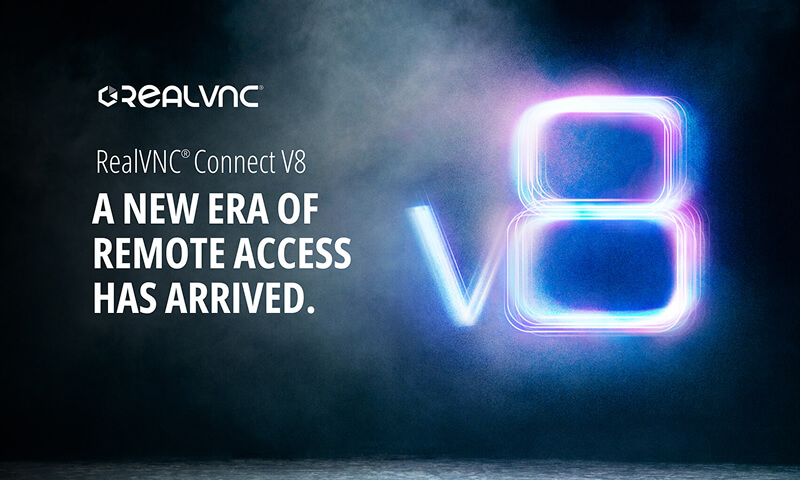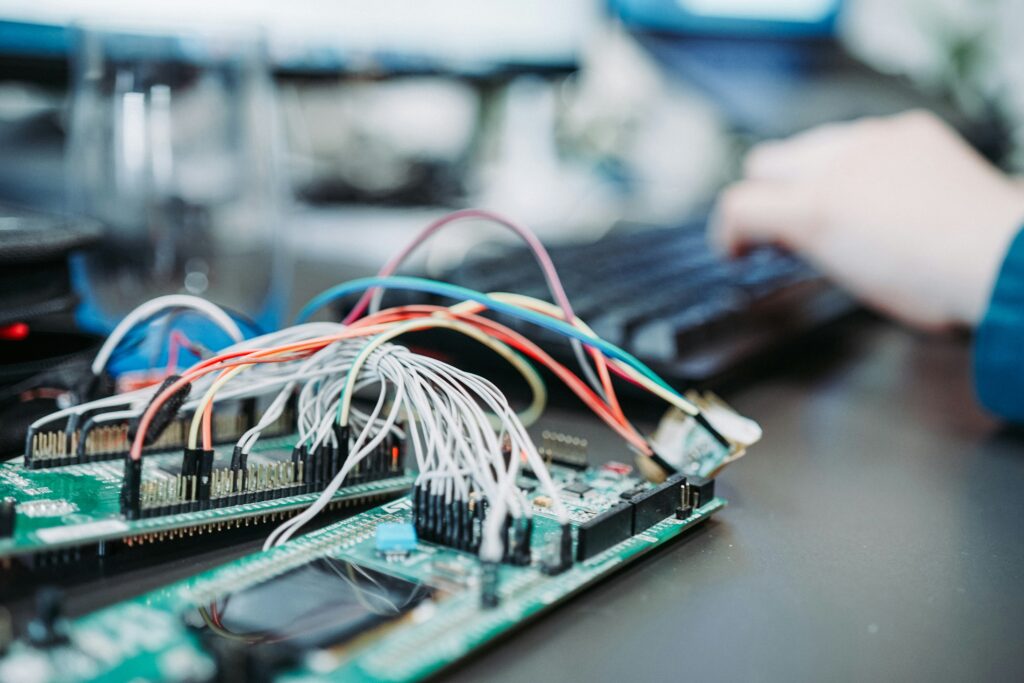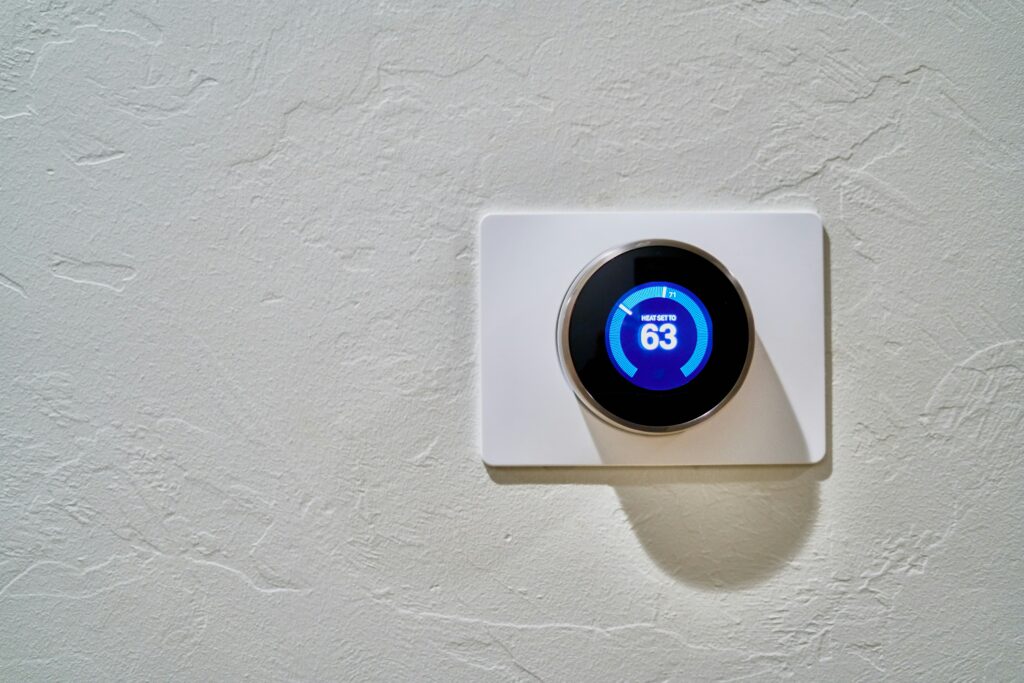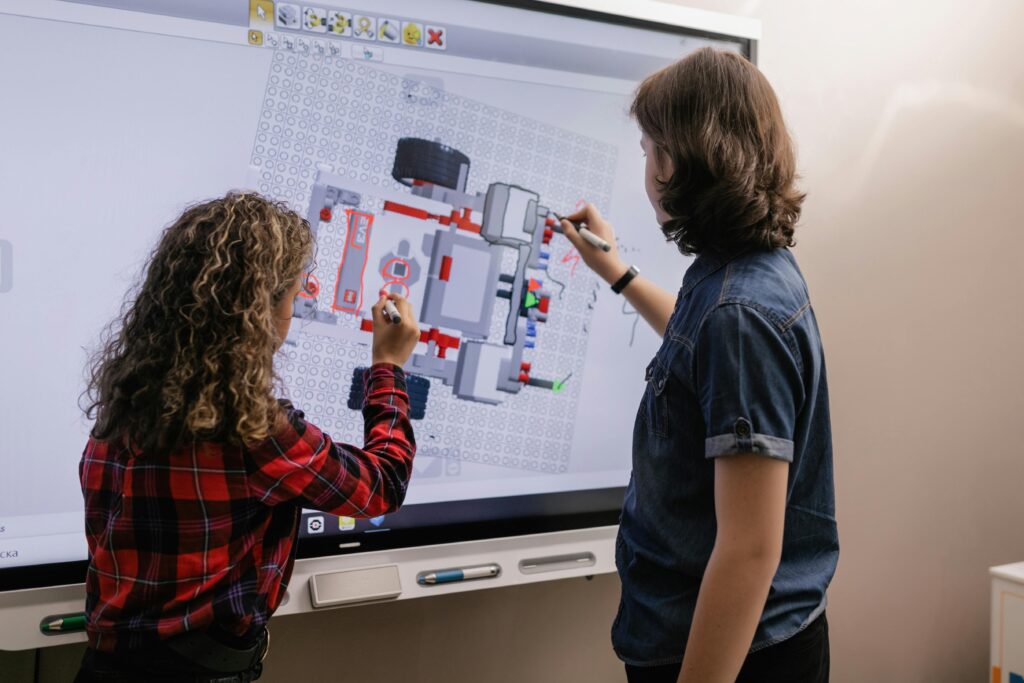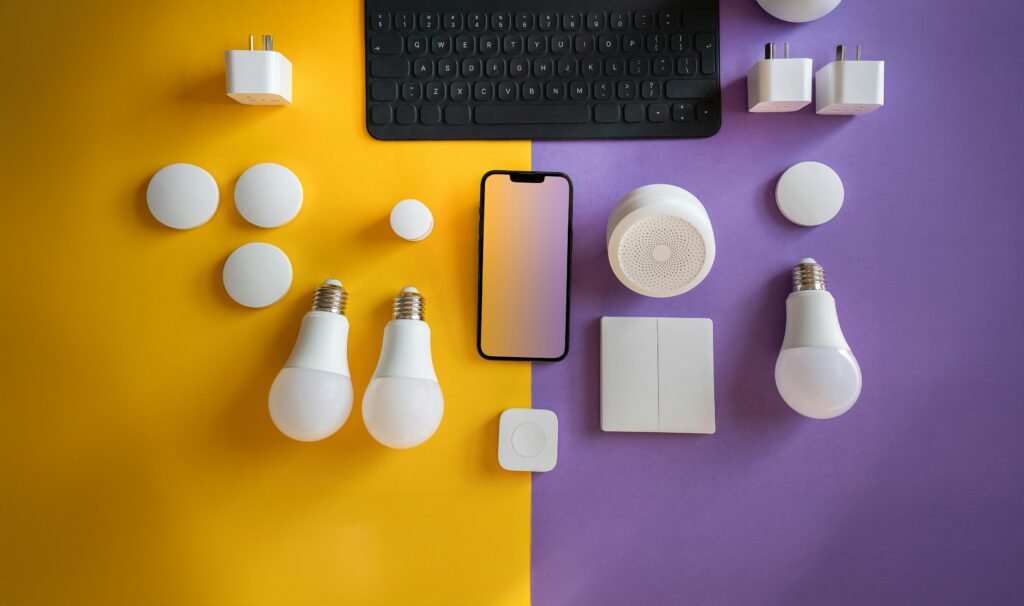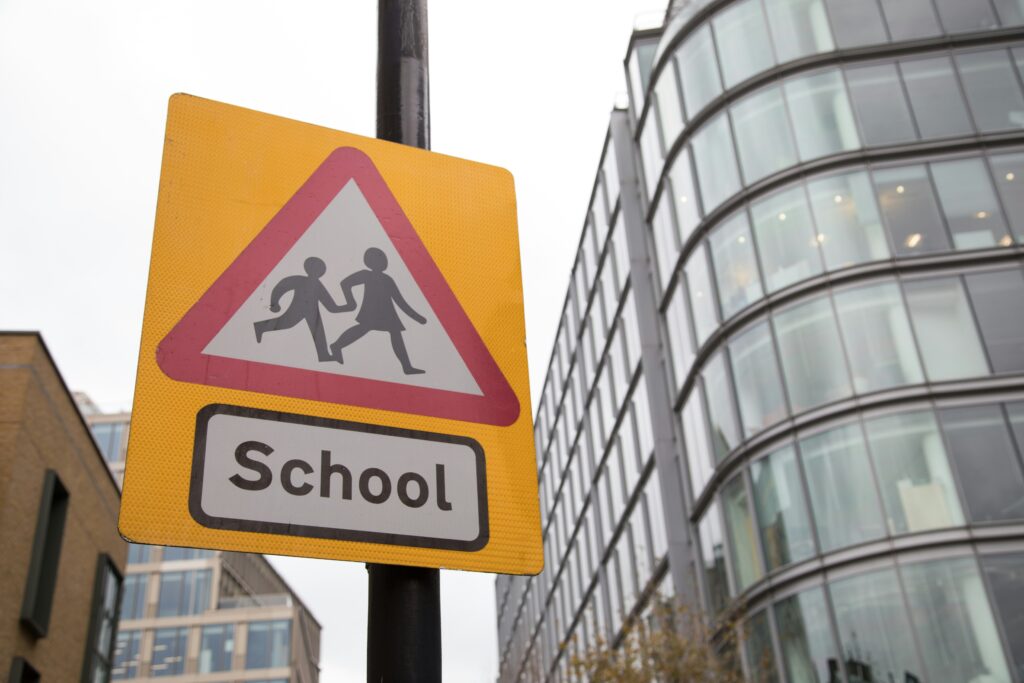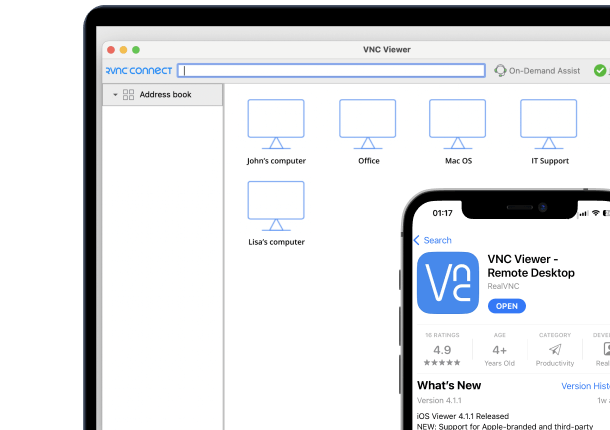Some of us still remember when the fanciest tech in school was a Windows 98 machine that took an eternity to boot and made a sound like it was dialing into NASA. Fast-forward to today, and classrooms are absolutely loaded with connected devices that quietly collect data, run simulations, and manage everything, including the lighting and the lesson plans.
This shift has largely been powered by the Internet of Things (IoT), a vast network of physical tools and systems that exchange data in real time. In the schoolyard, this means smarter systems, safer campuses, and much more insight into how students learn and perform.
In this guide, we’ll explore how IoT in education is reshaping the sector, examining practical IoT applications in real educational institutions and the risks schools should be planning for. We’ll also break down how RealVNC Connect helps keep those systems secure, scalable, and always accessible.
Rewiring the Education Industry with IoT Technology
In schools, IoT isn’t just flashy gadgets and gimmicks. In EdTech, IoT is connecting real tools to real data to solve real-world problems. From lighting systems that power down when students go out for lunch to attendance logs updated the moment a student scans their ID, these quiet improvements are changing how our schools operate behind the scenes.
The Internet of Things refers to networks of connected systems and devices that exchange data in real time. In education, IoT solutions extend far beyond tablets and laptops. Here we see smart thermostats that adjust based on how many students are in a room, RFID-tagged ID card access control, and sensors that track CO2 levels to improve air quality. Each device plays its own part in building a responsive, efficient, and much safer education industry.
The scale of adoption is already quite significant. In 2024, K-12 was by far the largest segment in the entire IoT global market, accounting for around 39.6% of deployments.
Where IoT Applications Are Making the Most Impact on Education
The phrase “IoT in Education” probably has you imagining some kind of tech expo. However, the reality is actually more practical and oriented toward improving both student progress and safety. IoT applications are making the day-to-day operations in educational institutions run smoother, smarter, and safer in the form of smart classrooms in high schools and campus-wide energy dashboards in universities.
Data-Driven Decision-Making: Real Insights in Real Time
Teachers used to have to rely on gut instinct to spot disengaged students. Now, a dashboard might just do it for them. Connected IoT devices help track attendance patterns and screen time. It can even monitor the quality of air in the classroom via IoT sensors, so a stuffy room is no longer an excuse for zoning out.
All of this data feeds into systems that can adapt content, pacing, and support to fit the learning environment and remotely manage the classroom. Basically, it’s good news for students who just don’t thrive under the traditional one-size-fits all approach to instruction.
Enhanced Security and Safety: Smarter Campuses, Calmer Parents
Schools are now using IoT to monitor campuses with far more precision. Some schools are using smart ID badges for smart access control on school premises. Many public schools have even made wearing them mandatory for students.
It all sounds a bit Big Brother-ish, but comforting when it comes to emergency response and attendance records. IoT vape detectors can also be installed, sending alerts long before the staff smell the evidence.
Streamlined Administrative Processes: Less Paperwork, More Bandwidth
Who loves taking the attendance role? Nobody. With IoT, a student tapping their RFID card or just walking through a scanner can mark them present. Meanwhile, energy systems adjust based on classroom occupancy, and HVAC systems can be managed from just a single control panel.
Improved Student Engagement and Interactive Learning
With most U.S. schools now aiming for 1:1 student device access (45% already had it by 2021, and another 37% were halfway there), the tools are in place. Combine that with the stat that over 82% of students aged 12–17 carry smartphones they already use in class, and it’s clear: e-learning and digital collaboration are no longer the future, but part of daily life.
Smart classrooms use that tech to host group projects, simulate science experiments, and let students learn at their own pace and often with far more excitement than a chalkboard could ever deliver.
Classroom Engagement Gets a Boost from Smart Devices
If you’ve ever tried and succeeded at keeping a room full of teenagers focused without tech, we take our collective hats off to you. For the non-superhero teachers among you, you know too well that it’s a massive challenge nowadays. Thankfully, IoT-enabled devices are changing that story. Even better, they’re doing it in ways that are measurable, engaging, and yes, even fun.
Increasing Student Engagement Through Interactive Learning.
Today’s classrooms are wired for more than just Wi-Fi. Imagine touch-enabled displays, live polls on tablets, and sensors that can respond to student input. These interactive lessons keep learners active rather than passive. This really matters, especially since recent research shows that active and interactive learning increases student performance, especially in STEM fields. This means better grades, higher retention, increased comprehension, and far fewer glazed-over stares from bored students.
Learning at Your Own Pace (Without Falling Behind)
Flexibility is the number one issue when it comes to classroom engagement. With devices that can track individual progress, students can move at their own pace. They can also revisit material as needed or get nudged when extra help is required.
For teachers, it’s like having a real-time dashboard of who’s thriving and who’s silently falling behind. It’s a major shift away from relying on hand-raising alone.
Systems like these don’t run themselves, though. Behind the scenes, centralized learning platforms and analytics dashboards need to stay up and running. IT teams typically need secure remote access to support these back-end systems, especially when they’re dealing with classrooms in session or multiple campuses.
More Group Projects, Less Group Chaos
No more fighting over a single laptop. Modern education means group projects involve shared screens, collaborative whiteboards, or cloud-based workspaces powered by classroom tech. Whether sketching a concept or coding something together, these setups make it easier for students to contribute equally.
An IoT network keeps it all connected and responsive, while teachers can stay in the loop through synced devices and live feedback.
Engagement You Can Actually Measure
This isn’t just feel-good tech; it’s backed by real-world experience. In fact, 81% of K-12 administrators say IoT will improve student engagement. When the tech is used well, students are excited, participate more, focus longer, and retain more.
However, when students and tech mix, things are bound to go sideways. Being able to remotely access systems for quick fixes is just one of the ways RealVNC Connect has been helping the smart education system for decades.
You can read about how RealVNC can help educators and be a part of your remote access strategy teams in our free ebook.
Improved Resource Management Through IoT Solutions
It’s easy to overlook the administrative engine that keeps a school running. Scheduling, maintenance, and facilities management all happen behind the scenes. IoT solutions are quietly making all of this work faster and smarter.
Centralized Control, Without the Chaos
One of the biggest advantages of having IoT in schools is the ability to centralize almost every operation. Rather than clicking through apps and tabs and loading spreadsheets so big that they max out your PC memory, admins can now use dashboards to pull in all of that IoT data.
Implementing IoT gives a kind of unified visibility, which is something that IT teams managing the infrastructure will celebrate. When something needs adjusting or investigating, tools like RealVNC Connect allow staff to perform remote management and monitoring (RMM) of the systems without running across campus with a laptop.
Lights Out, Bills Down
Cost savings are a lifeline for schools, and using Internet of Things devices to manage energy-using resources like lights and HVAC can save schools big time. In one European pilot, 70% of the participating schools reduced their overall energy usage, with an average 11% drop in electricity consumption after the installation of IoT systems.
Meanwhile, a Texas school district using smart lighting tech cut usage by 41.4%, saving $33,664 annually. That’s money that can be directed toward the educational experience, rather than utility bills. These kinds of resource management outcomes are increasingly common in schools using IoT-based solutions.
A Safer Education System Starts With IoT Devices
Creating a truly secure environment in schools today means more than locking doors. Educators need to create awareness, be responsive, and most importantly, be in control.
Here’s how devices connected through an Internet of Things system help keep students and staff protected:
- IoT-Enabled Security Cameras: Smart, Internet-connected cameras that allow remote monitoring, video analytics, and real-time alerting. Footage can be accessed securely off-site, helping staff and responders act quickly.
- Smart Locks and Entry Control: Door locks that are linked to ID cards or mobile credentials can restrict access by time, role, or zone. These smart locks are programmable, trackable, and far more flexible than a collection of keys on a lanyard.
- Emergency Detection Sensors: IoT sensors can detect smoke, unusual sound patterns (such as gunshots), or even air quality issues. Alerts are quickly routed directly to school staff or emergency services within seconds.
- Zone-based Access Monitoring: Instead of just knowing who entered the building, schools can monitor specific zones, such as labs and staff-only areas, with room-level tracking. This increases accountability and safety.
Measuring What Matters: IoT’s Role in Student Learning and Performance
For decades, measuring student learning was mostly about test scores and teacher intuition. Today, IoT technologies are giving educators clear visibility into how students absorb material.
In connected classrooms, educational materials can be delivered and adjusted in real time. A student who breezes through a topic might be served more challenging exercises automatically, while another who hesitates gets added guidance. This kind of personalized learning happens through the use of adaptive tools, dashboards, and assessment platforms that can track student progress and flag trends early.
Teachers can see how engaged each learner is, whether in a group setting or during independent study. This data helps to shape smarter lesson planning and supports targeted interventions. All of this can happen with or without standardized testing.
The Challenges of Implementing IoT in Schools
While implementing IoT in schools offers clear benefits, it’s far from an easy plug-and-play solution. Rolling out a network of devices connected to learning and facility systems brings quite a few significant hurdles.
First, cost. Beyond the upfront spending on hardware, there’s ongoing maintenance, software updates, and IT support. All of this requires a long-term budget, not a one-off grant.
Then there’s security. Most IoT devices are not built with network security in mind. They lack even basic protections, which makes them vulnerable points in school networks. These inherent security flaws have earned these devices the nickname of “Internet of Insecure Things” among many IT professionals.
This is a big concern, especially when you’re handling student data and real-time data collection over the same network.
Infrastructure is another sticking point. According to UNESCO, only about 50% of lower-secondary schools worldwide had adequate internet for teaching as of 2022. Even in well-equipped educational environments, supporting IoT means having people understand how these systems talk to each other.
What’s Next for IoT in Education
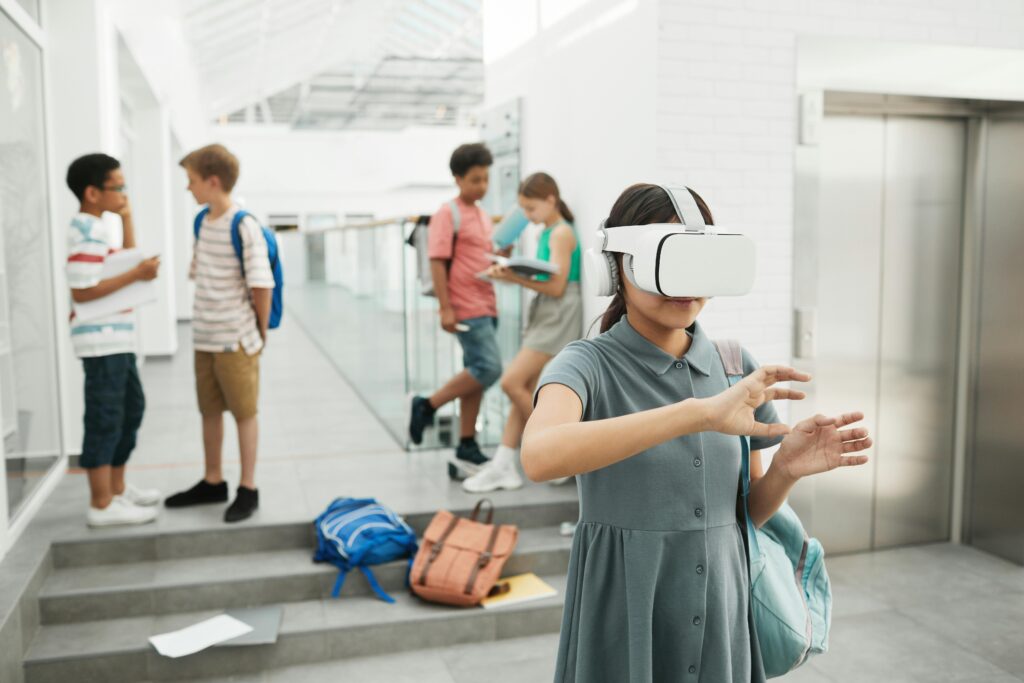
The future of IoT in education is less about adding more gadgets and more about making learning smarter, adaptive, and way more fun. Here’s where things are headed:
- Wearables: Devices worn on the body that can monitor fatigue and physical activity.
- AI-Driven Learning: These can adapt in real-time without the need for teacher intervention. AI can also alert educators when students are falling behind.
- AR/VR Tools: These provide extremely immersive and interactive learning experiences and are ideal for students who have visual learning styles.
- Smart Campuses: IoT devices that automate entire environments and perform proactive maintenance on the fly.
- Data-Driven Support: Data collection algorithms that learn student behavior and tailor lessons especially for them.
All of the advancements will completely reshape the learning process. IoT will remain at the forefront as a long-term asset and not just a classroom trend.
RealVNC’s Role in IoT for Education
RealVNC Connect plays a key role in helping schools and universities bridge gaps in education by offering enterprise-grade remote access software to manage the systems behind IoT deployments.
While most IoT devices can’t be accessed from outside of the local network, RealVNC Connect makes it easy for IT teams to manage the internal servers and dashboards that control them, without opening the network to risk.
Its end-to-end encryption (e2ee), simple interface, and multi-platform support (including any Linux-based IoT appliances with a GUI) make it ideal for both seasoned IT staff and busy educators. With features like screen sharing, file transfer, and remote troubleshooting, IT teams can help maintain uptime across campuses while also supporting classroom collaboration where needed.
Whether it’s accessing a building automation console or helping a teacher configure an assessment platform from across town, RealVNC Connect makes secure, real-time support possible no matter where you are.
Making the Most of IoT in Education
From smart classrooms and energy savings to personalized learning and student safety, IoT is helping educational institutions rethink how they operate and teach. The benefits for educators are clear: better visibility, stronger engagement, and more efficient systems.
However, successful adoption still requires a lot of careful planning, secure infrastructure, and right support tools. While challenges like cost, security, and IT complexity remain, the value of IoT in education continues to grow.
Remote access solutions like RealVNC Connect help make that possible by providing secure, remote access to critical production systems. Download RealVNC Connect today and explore how RealVNC can support your IoI strategy in education.
Frequently Asked Questions
What is IoT in education, and how does it work?
Iot (Internet of Things) is a network of connected devices such as sensors and smart boards that collect and share data across school systems. These tools help create responsive and data-driven learning environments.
What are the main benefits of IoT for educational institutions?
IoT improves safety, simplifies campus operations, and supports interactive learning tailored to student needs. It also enables real-time insights into performance, engagement, and resource usage.
What challenges do schools face when implementing IoT?
Key issues include high setup costs, technical complexity, and ongoing security risks. Many schools also face gaps in infrastructure or staff expertise.
How can IoT contribute to remote learning?
IoT supports remote learning by connecting students with real-time content, feedback, and collaboration Tools. It also allows teachers to track students’ progress remotely and adjust lesson content according to student result feedback.
What role does secure remote access play in IoT deployments within education?
Secure remote access is required to access the systems that support IoT devices. IT teams use tools like RealVNC Connect to access, manage, and troubleshoot these systems while protecting sensitive data.
